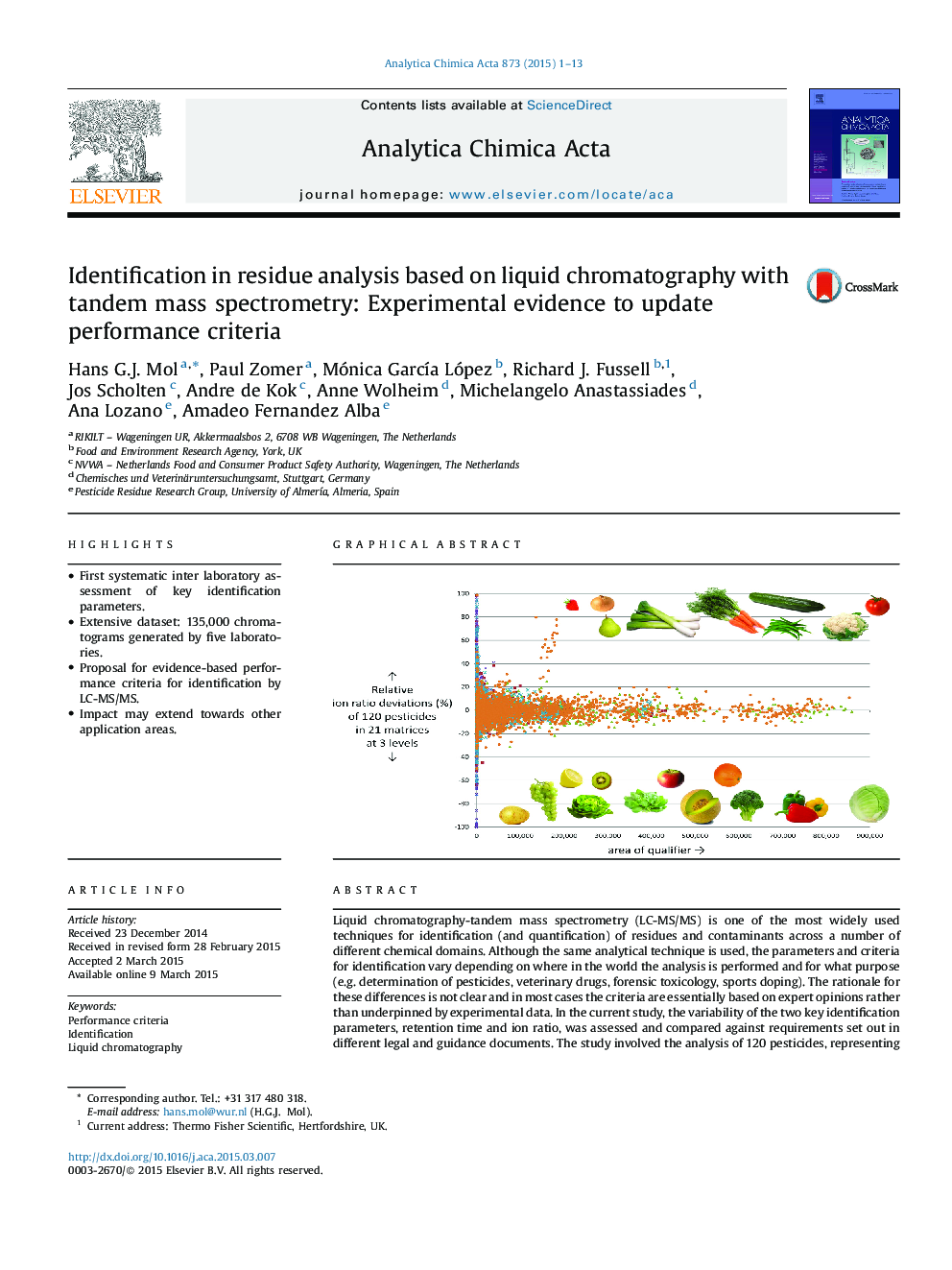| کد مقاله | کد نشریه | سال انتشار | مقاله انگلیسی | نسخه تمام متن |
|---|---|---|---|---|
| 1163815 | 1490959 | 2015 | 13 صفحه PDF | دانلود رایگان |
• First systematic inter laboratory assessment of key identification parameters.
• Extensive dataset: 135,000 chromatograms generated by five laboratories.
• Proposal for evidence-based performance criteria for identification by LC-MS/MS.
• Impact may extend towards other application areas.
Liquid chromatography-tandem mass spectrometry (LC-MS/MS) is one of the most widely used techniques for identification (and quantification) of residues and contaminants across a number of different chemical domains. Although the same analytical technique is used, the parameters and criteria for identification vary depending on where in the world the analysis is performed and for what purpose (e.g. determination of pesticides, veterinary drugs, forensic toxicology, sports doping). The rationale for these differences is not clear and in most cases the criteria are essentially based on expert opinions rather than underpinned by experimental data. In the current study, the variability of the two key identification parameters, retention time and ion ratio, was assessed and compared against requirements set out in different legal and guidance documents. The study involved the analysis of 120 pesticides, representing various chemical classes, polarities, molecular weights, and detector response factors, in 21 different fruit and vegetable matrices of varying degrees of complexity. The samples were analysed non-fortified, and fortified at 10, 50 and 200 μg kg−1, in five laboratories using different LC-MS/MS instruments and conditions. In total, over 135,000 extracted-ion chromatograms were manually verified to provide an extensive data set for the assessment. The experimental data do not support relative tolerances for retention time, or different tolerances for ion ratios depending on relative abundance of the two product ions measured. Retention times in today’s chromatographic systems are sufficiently stable to justify an absolute tolerance of ±0.1 min. Ion ratios are stable as long as sufficient response is obtained for both product ions. Ion ratio deviations are typically within ±20% (relative), and within ±45% (relative) in case the response of product ions are close to the limit of detection. Ion ratio tolerances up to 50% did not result in false positives and reduced the false negative rate for pesticides with product ions in the low S/N range to <5%. Without ion ratio criterion, two false positives were obtained in 105 non-fortified samples. Although the study has been conducted for pesticides residues in fruits and vegetables, the impact of these findings is believed to extend towards other application areas and possibly support adjustment or consolidation of criteria across other analytical domains.
Figure optionsDownload as PowerPoint slide
Journal: Analytica Chimica Acta - Volume 873, 11 May 2015, Pages 1–13
